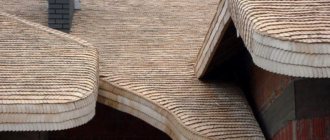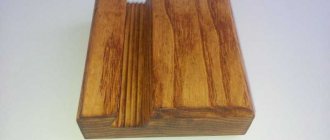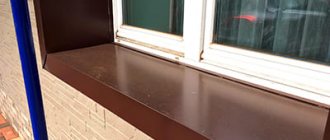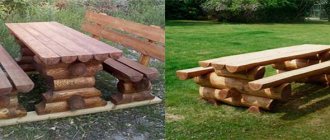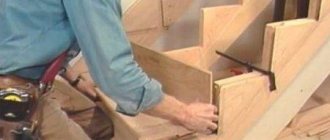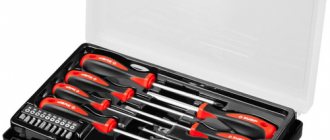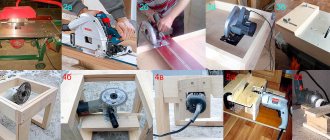Repair carries many pitfalls. If you need to repair the stairs and make high-quality railings, then you should take the process seriously. You need to use suitable materials. This creates a unified design in the room. Many designers suggest using wood as the main material, as it has a number of advantages over other solutions.
The railings are secured in various ways, which will be discussed in the article. In addition, they can be manufactured without the involvement of skilled workers. To do this, it is better to use wood, which will allow you to do the job efficiently. Wood is considered the preferred material because, with proper care, it will last for many years.
Features of materials and options for their application
The choice of material for making railings for stairs in a private house often depends on the style of interior design. If the rooms are decorated in a loft, hi-tech or minimalist style, chrome-plated metal products would be an ideal option.
Many parts can be purchased ready-made, but before that you need to carefully calculate the dimensions of all structural elements. We should also not forget that the railings are used very intensively, so the coating will quickly wear off.
It is better not to use aluminum for the manufacture of railing parts, as it resists mechanical stress very poorly, becomes dull and leaves marks on the hands.
The best option for a modern interior would be stainless steel. Railings made from it will be strong and durable. They will be able to maintain a presentable appearance for many years.
Forged staircase railings look very beautiful in the house. They will fit well into the stylistic solutions of Art Nouveau and Provence. The base of the structure is assembled by welding, and the artistic forging elements are installed last. It is quite difficult to make them at home, so it is better to purchase ready-made ones or order them.
The most affordable and easiest to use material is wood. It is the easiest way to make handrails for stairs with your own hands.
What tool will you need?
Preparation of the tool will depend on which parts of the wooden railings will be made by hand. If you order all the parts from specialists, providing them with drawings, this will significantly speed up and simplify the work. All you need is a screwdriver, self-tapping screws, bolts, wood glue, clamps, and a hacksaw. And, of course, a pencil, ruler, corner or level.
It is more convenient to use a modern power tool, which allows you to cut or sand something as quickly as possible. But sometimes hand tools also become useful. Thus, the edges of the cuts are often sanded with sandpaper. Correct the shape of the parts with a chisel or cutter.
If you want to make all the details with your own hands, then you need a surface planer and a jointer to trim the bars, slats, and boards. You will need a miter saw, a wood milling and lathe or a jigsaw (if balusters are cut from a thin board), and a grinding machine.
Features of wooden construction
Wood has many advantages over other materials: products can be created without the help of specialists and can be easily attached. The material is also considered quite durable and, with proper care, durable.
The main details of a wooden staircase structure are railings, handrails and balusters. You can order them or make them yourself. Everything will depend on the complexity of the design. Each element has special characteristics:
- railings are considered the main element and have a different structure;
- handrails are the upper part that is held by hands; are mounted on balusters and can be located on one side of the staircase or on both sides, which depends on the type of construction;
- balusters are support posts on which handrails are attached; the strength of the product and external beauty depend on them.
When making your own stairs, you should familiarize yourself with the necessary regulatory documents and study the recommendations for choosing the sizes of some parts.
Installation of wooden railings. Let's learn to do it right!
The installation of railings should begin with the installation of end bollards. These are the points from which you need to start in the process of performing work. They should be installed at the beginning and end of the stairs, as well as at its turns.
Attach a string to one of the pedestals and stretch it between all the pedestals. So, you will determine the location of the handrail, which will allow you to secure it correctly and securely.
Attaching wooden balusters
Then mark the places where the balusters will be attached. The distance between them is determined individually, however, it is not recommended to place them further than 20 cm from each other. Their complete installation is only welcome. These elements can be attached both to the steps and to the strings on which the steps are attached. If you decide to fasten the balusters to the bowstrings, then you need to first cut them at a given angle. Accordingly, the balusters are mounted horizontally to the steps.
Securing balusters with nails is not very effective. Practice shows that during use, nail fastenings quickly become loose. It is better to use self-tapping screws and glue specially designed for this.
Handrail dimensions
Wood selection
Internal stairs are most often made of wood. But not every wood can last long. It needs to be carefully looked after so that its performance and decorative qualities remain at a high level.
This largely depends on the type of wood. When making the staircase parts yourself, you must first decide on the color and appearance of the railings.
The quality of products significantly affects their cost. For example, the price of an oak staircase railing will be much higher than other options, but all performance characteristics will also be excellent.
Cherry and beech wood will also perform well. Spruce and pine can be used, but their softness requires careful handling when processing.
Maintenance of terrace fencing
Maintenance practices for deck railings depend on the material from which they are made. Wooden barriers, properly treated during construction, require almost no special care. Impregnation protects wood from premature aging, cracking and rot. If the barriers are closed, then to care for them, it is quite enough to carry out a wet wipe from time to time. External fences can deteriorate from moisture, wind and dust. If individual sections are severely damaged, they can simply be replaced with new ones.
Fences made of metal require special care. Ferrous metal, as a material, always requires a special approach. It must be painted to avoid rust. During operation, the paint layer on such a surface should be constantly updated. Steel fences treated with special anti-corrosion compounds last a long time and do not require special maintenance.
Preparing for work
In order for the railings to perform their role efficiently, it is necessary to correctly calculate their dimensions. In accordance with building regulations, their height should be from 70 to 90 cm. Small changes up or down are allowed. The width of the handrails should be comfortable for the hand. This will be equal to approximately 4 - 8 centimeters.
To install the structure you will need:
- measuring instruments;
- pencil;
- hammer or screwdriver;
- nails or screws.
First, the staircase frame is assembled, then the steps are installed. At the final stage, the production of the railings begins.
The final stage of production - painting
Painting
You can paint the railings with a brush or spray. Don't forget to prime the metal before doing this. Interestingly, only white primer will hide small irregularities, which will make the paintwork smoother. When choosing paint and primer, pay attention to the composition, because they must be compatible. Each layer must dry well.
If you want your wrought iron railings to look chic, you should apply a wrought iron patina. So, you can decorate some forging elements. The manufacturing process is now complete. All you need is to install the fence in a permanent place.
Do you already have experience in manufacturing and installing railings? Then write us comments. Your experience will be useful to us!
Installation process
To ensure that all work is carried out correctly, you must strictly follow the instructions and drawings. The process itself consists of several stages:
- Taking measurements. At this stage, the number of balusters and the spaces between them are calculated.
- Marking. Each part is marked with a number so that there are no errors during assembly.
- Preparation of wooden blanks of the required size.
- Processing parts and giving them shape. First, the handrails are prepared, then the balusters.
- Assembly of the structure.
- Manufacturing of supports.
- Installation of support posts and railings on the stairs.
Exactly following the instructions and drawings will allow you to create and install high-quality and reliable railings. Particular attention should be paid to the shape of the structure and the style of the interior.
In the presented photos of railings for stairs of different models, you can see interesting examples with carved, chiseled and stylized elements. Options with a combination of different manufacturing materials look interesting: wood and artistic forging, glass and chromed metal.
Handmade railings have a special advantage: they are high quality and reliable.
Important points to consider when making railings
Height of the railing
Here you should pay special attention to the shape. If you have children, then there's a good chance that railings can take a lot of abuse. The child will most likely test the strength of the railing repeatedly, for example by swinging on it or simply sliding down it. It is also worth noting that the lower part of the railing should be made so that your child cannot slip between the elements. As for height, this is worth thinking about separately. The minimum height of the railing is 900 mm. The best height for a person 1.80 m tall is 1200 mm.
Photo tips on how to make a handrail for a staircase with your own hands
Conclusion
Having experience working with wood or metal, making your own railings for a wooden staircase will not be difficult. Purchasing ready-made parts will make this process especially easier. True, this will lead to a slight increase in the cost of manufacturing the product (see also the article “Staircase on a metal frame made of wood: advantages and process of manufacturing combined structures”).
From the video in this article you can get some additional information on the topic discussed.

